What to Build a Raised Garden Bed From
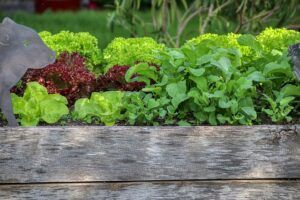 With a new area to put a raised garden bed in, one of my biggest frustrations with planning was what to build a raised garden bed from. I’ve done quite a bit of container gardening and in-ground bed planting. With this being my first foray into the raised garden bed arena, what materials to use was where I kept getting stuck.
With a new area to put a raised garden bed in, one of my biggest frustrations with planning was what to build a raised garden bed from. I’ve done quite a bit of container gardening and in-ground bed planting. With this being my first foray into the raised garden bed arena, what materials to use was where I kept getting stuck.
The space and light available dictated most of my size and shape options. Having a general plan on what will be planted in the raised beds provided a bit of direction too. The sticking point was the type of material to use in order to fit in with my budget, my short and long term garden goals, and the aesthetics I was looking for.
Should I purchase pre-made, ready to assemble kits? Should I start from scratch and build my own design? Should I mix materials or stick with one for the sake of simplicity? This one question had turned into a deluge of distraction and delay. So I went on the hunt for as much information as I could find in order to help myself (and all of you 🙂 beautiful people) know what the options are. First thing’s first, what and why…
Table of Contents
What are Raised Garden Beds?
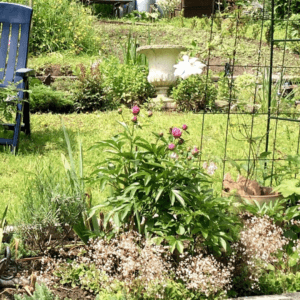 Raised garden beds have been used since- well, forever. Raised garden beds don’t even have to have a retaining structure surrounding them to be effective. These types of flat-topped mounds require much more work, as erosion and the natural settling of the soil throughout the year mean that a re-structuring and supplementation is often required to maintain the mound itself.
Raised garden beds have been used since- well, forever. Raised garden beds don’t even have to have a retaining structure surrounding them to be effective. These types of flat-topped mounds require much more work, as erosion and the natural settling of the soil throughout the year mean that a re-structuring and supplementation is often required to maintain the mound itself.
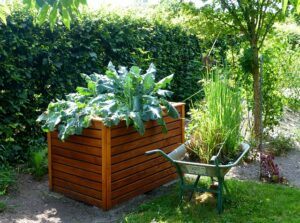 Raised beds can be in any size and shape, but are often square or rectangular. (The simplicity of the engineering skills required for these shapes mean most of us can put together one with little to no special training.) Raised beds often have permanent rigid sides that hold in the garden soil.
Raised beds can be in any size and shape, but are often square or rectangular. (The simplicity of the engineering skills required for these shapes mean most of us can put together one with little to no special training.) Raised beds often have permanent rigid sides that hold in the garden soil.
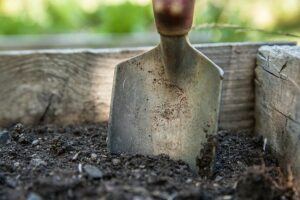 Some use native soil, others use specialized garden soil purchased specifically for the raised bed. Raised beds often do, but are not required to have an open bottom that allows for the plants to grow past the bottom of the bed walls and into the ground underneath.
Some use native soil, others use specialized garden soil purchased specifically for the raised bed. Raised beds often do, but are not required to have an open bottom that allows for the plants to grow past the bottom of the bed walls and into the ground underneath.
Why Should You Build a Raised Garden Bed?
 While the first implementation of unrestricted raised garden beds were, perhaps, more cost effective in its lack of requirement of any soil-retaining materials, the constant need to re-shape and augment the mound meant innovation was not far behind.
While the first implementation of unrestricted raised garden beds were, perhaps, more cost effective in its lack of requirement of any soil-retaining materials, the constant need to re-shape and augment the mound meant innovation was not far behind.
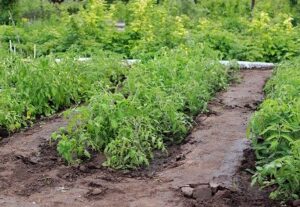 This is where the idea to build a structure surrounding the raised mound, preventing as much of the erosion as possible, retain more nutrients, as well as have a more direct control on surface and subterranean infiltrators came in. Weeds, pests and even disease can be easily spread by simple proximity in the gardening world. With a fixed and impenetrable structure protecting a good portion of the growing space of the plants, this risk was mitigated significantly.
This is where the idea to build a structure surrounding the raised mound, preventing as much of the erosion as possible, retain more nutrients, as well as have a more direct control on surface and subterranean infiltrators came in. Weeds, pests and even disease can be easily spread by simple proximity in the gardening world. With a fixed and impenetrable structure protecting a good portion of the growing space of the plants, this risk was mitigated significantly.
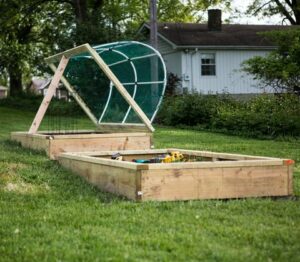 Raised beds allow for earlier planting and later growing times compared to in-ground beds. The soil composition is also directly controlled and therefore able to be more easily amended based on the preferences of whatever plant will be growing inside it. (Some plants like higher pH, some like more sand or clay, etc) There is also a much higher density capability- growing more plants in less space- than standard, in-ground beds.
Raised beds allow for earlier planting and later growing times compared to in-ground beds. The soil composition is also directly controlled and therefore able to be more easily amended based on the preferences of whatever plant will be growing inside it. (Some plants like higher pH, some like more sand or clay, etc) There is also a much higher density capability- growing more plants in less space- than standard, in-ground beds.
Material Types: Advantages and Disadvantages
There are 6 types of materials most often used to build raised garden beds: wood, metal, stone/concrete/brick, plastic, up cycled materials, and pressure treated wood. They each have different upfront costs, longevity and uses.
Wood
Treating wood (most often with oils or chemicals) can increase it’s longevity and beauty, but make sure to be careful. Ensure a child, animal and plant-safe treatment is used.
Pine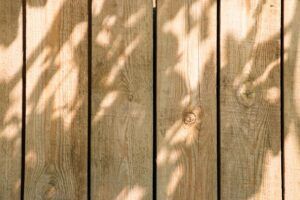
- The most budget-friendly wood. Good for first-time, short term or frugal garden beds.
- Easy to find.
- Beds must often be replaced every 4-6 years.
Cedar (Cypress)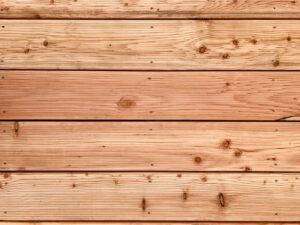
- Considered the “gold standard” for raised beds.
- On average, cedar is about double the cost of pine.
- Resistant to insects, rot and fungi invasion.
- West coast cedar most widely available, East coast more rot resistant as well as harder to find, and therefore more expensive.
- Beds need to be replaced every 10-15 years.
- Cypress– very similar to Cedar in most ways but not quite as dense and not widely available, and can be more expensive.
Redwood/other harder to find or expensive woods (Black Locust, Oak, Fir, Hemlock, etc)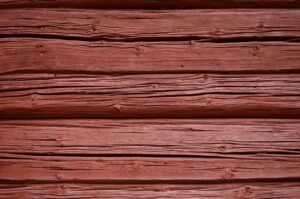
- Beautiful aesthetically, but very expensive.
- Fir and Hemlock are harder to find, therefore more expensive than pine, but last a similar amount of time (5-7 years)
- Redwood and Oak are hardwoods that are much more expensive, but pay off in the longevity of their beds, often lasting between 10 and 20 years.
- Black Locust is considered an invasive species by some states, and therefore it’s propagation and sale are restricted in some places. This makes availability a real issue, having a real impact on price. This is unfortunate, in some ways, because it was the nickname of “stone wood” by Native Americans due to its longevity and durability. A raised bed made from Black Locust wood is not only resistant to rot and decay, but can be expected to last up to 50 years!
Wood Composites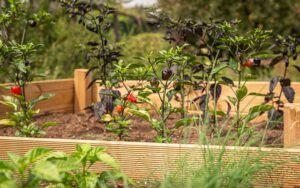
- Composites are made from blended wood and synthetic materials like polyethylene. Wood scraps from both hard and soft woods the sawmills don’t use are blended with heated thermoplastic resins and reformed into final products.
- They are resistant to rot and are often last longer than pine, fir or hemlock.
- Some have surface textures made to mimic natural wood grains for a more aesthetically pleasing look.
- Some are even made from recycled wood products.
- Wood composite raised beds can last between 10 and 20 years if properly tended.
Metal
Galvanized Steel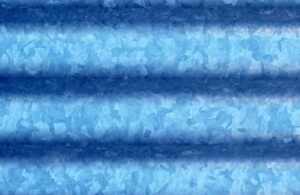
- Galvanized steel has been coated in zinc to prevent corrosion.
- Weather proof, rust resistant, long-lasting, and lighter compared to other building materials, galvanized steel has become more and more popular in raised garden beds.
- While there can be some leaching of zinc into the soil, the amount is minimal, and arguably good for soil health. Zinc is an essential nutrient for plants, and the amount that can leach into the soil from the galvanized steel used in raised beds is minuscule and poses no risk to adults, children, animals or plants.
Aluminum
- Aluminum will not rust, but will oxidize, creating a white powdery substance on the metal.
- A very lightweight option.
- Aluminum is not often recommended for raised beds or container gardening. Aluminum can change the chemistry of the soil (pH in particular) and has been known to stunt root growth in some cases.
Masonry
Stone/Brick/Cement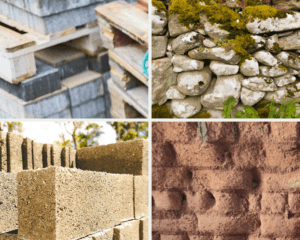
- Most long-lasting raised beds. Unless manually removed, masonry based garden beds will not likely need replacing.
- No risk of leaching chemicals into the soil. (Cement can leach a bit of lime, but that will only affect the soil pH, and it won’t last long. Acidifying fertilizers can help if growing a crop that likes more acidic soil.)
- Heaviest of the possible raised bed materials.
Upcycled Materials
- These are things that are commonly re-used as raised bed materials. Things like discarded tires, railroad ties, utility poles, wooden pallets, and the like. While these are creative, and I highly recommend finding uses for things instead of sending them to landfills, there are some risks to using them as building materials in raised garden beds.
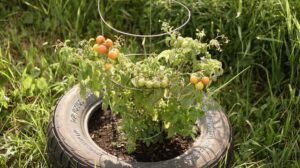
- There are often chemicals and toxic substances used to treat these materials that can leach into the soil.
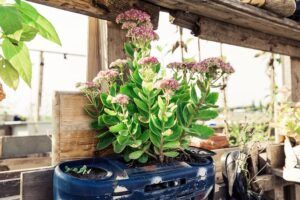
- Wooden pallets-while very popular in the “up cycled in the garden” arena, are risky because they can be treated with chemicals or have had chemicals stored on them that might have leaked onto them. They might also be totally clean, untreated wood. The problem is that there is really no way to tell which is which.
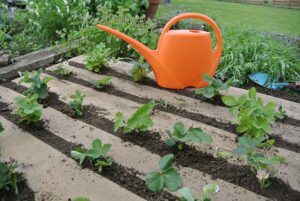
Pressure Treated Wood
- While many claim that pressure treated wood is safe to use after the year 2003, I personally don’t recommend it.
- Pressure treated wood is wood that has been treated by a high pressure injection of chemicals that make the wood more resistant to insects and moisture.
- The use of pressure treated wood is not allowed for certified organic gardening.
Plastic/Vinyl/Etc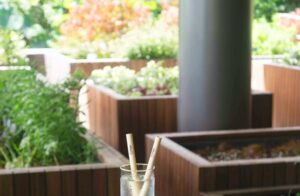
- Depending on the type of plastic used, these building materials can last anywhere from 1 year, to 50. The type and quality of plastic building materials is so wide-ranging that it makes a determination difficult without specifics on manufacturers.
- Plastic made for outdoor garden use by reputable and high quality manufacturers can not only have lifetime guarantees, but can also add to the aesthetics of the garden by providing an enormous range of colors or patterns.
- Pricing for plastic raised beds depend on the company and the quality of the type of bed.

- When considering using a plastic in the raised bed or as a container, checking the number in the recycle triangle on the bottom is a good idea. Numbers 1,2,4 and 5 are safer for food production.
- Vinyl materials are known to last between 10 and 20 years on average.
Mixing Materials
- Many gardeners use a combination of different building materials to put together their dream raised garden bed.
- There are extenders and corners that are made from plastic or cement that allow for easy insertion of wooden planks.
- Most of the time, if budget or ease of use is not a factor, aesthetics are the primary reason for the use of mixed materials.
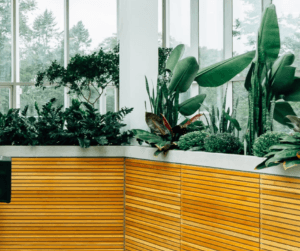
A Valuable List of What to Build a Raised Bed From
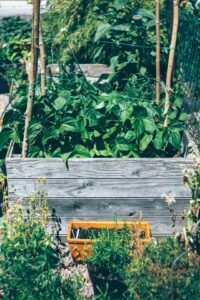 While looking into all the different options on what to build a raised bed from, I did come to the realization that the creation of a fully comprehensive list wasn’t feasible. There are so many options and so many creative gardeners out there! With that realization, I figured while this list might not ever be complete, it would be a great starting point. I’d love to hear from you to know what has worked, what hasn’t and what you learned!
While looking into all the different options on what to build a raised bed from, I did come to the realization that the creation of a fully comprehensive list wasn’t feasible. There are so many options and so many creative gardeners out there! With that realization, I figured while this list might not ever be complete, it would be a great starting point. I’d love to hear from you to know what has worked, what hasn’t and what you learned!
Do you have any recommendations or feedback to add to the discussion? Please feel free to comment below! I answer every comment. You can also email me at Randi@FairyCircleGarden.com or send me a message through Facebook or Instagram as well!
Did you like this article? Please share it on your favorite social media page! For more great content please check out our other articles and follow our social media pages on Facebook, Instagram, Pinterest and more!
Gratefully,
Randi
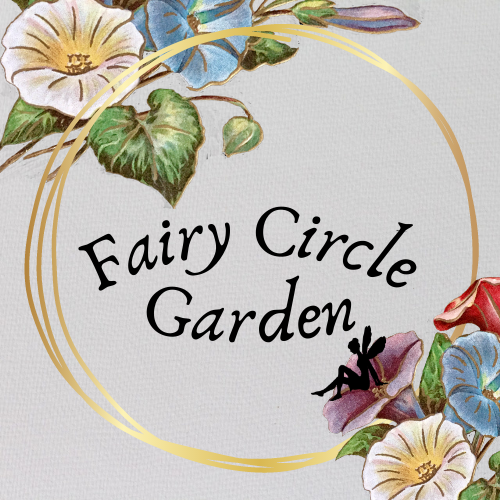
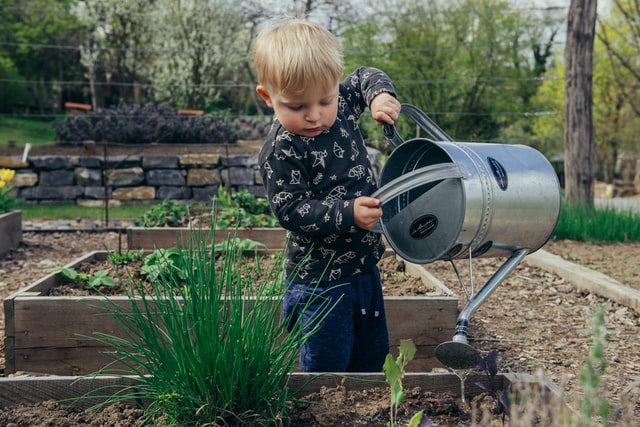

Gardening for me is relaxing and enjoyable. What to Build a Raised Garden Bed From is a very interesting topic. I believe we have to be creative and work with what we have available. I used an empty barrel and I cut it lengthwise, someone made the support from iron and I am happy with it.
I love that! Using what you have on hand is a gardener’s best tool to keep things interesting and not let anything go to waste! Sometimes the most magical gardens have the most unexpected elements!
I have always wanted to grow my own vegetables but do not have the extra yard space so would have to grow my food in a raised bed. Need to come to the decision if like to buy one already made or build my own raise bed. Think after reading your guide, am going to make my own so can learn from it.
I am so glad that I was able to help you come to a decision! There is so much to learn, that doing it yourself just adds that extra layer of understanding that other methods don’t. Great plan! I wish you luck and would love to see your results!